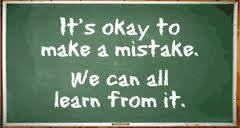Justin B. Post
Teaching Professor
Justin_Post@ncsu.edu (NC State)
919.515.0637
Philosophy

As a teacher, my goals are to make students feel welcome and supported in the classroom, motivate them to learn the material, and engage them in a discussion of that material that leads to a deeper understanding of the concepts involved. By using active learning and involving them in a discussion of the material, students are forced to truly grapple with the ideas. This can foster the critical thinking and problem-solving skills they need to succeed in and out of the classroom.
To me, the most important aspect of teaching is to create a comfortable, inclusive, and interactive learning environment for our students. A welcoming classroom makes students feel confident enough to voice their questions and opinions and begin a dialogue with us. To create a positive environment it is important to treat students with respect. For me, this starts with a positive tone on the syllabus, setting clear expectations for success from the start, and asking for feedback throughout the semester. I give students many opportunities to interact with each other through activities such as think-pair-share or, for online courses, padlets. This helps them gain confidence discussing the material with each other and, ultimately, makes them more willing to interact in the classroom learning community.

To help motivate students, I am careful to use examples that are meaningful to the students and often highlight issues important to people. For instance, I recently created a number of interactive in-class activities that utilize census data around important issues the students have an interest in.
One activity uses the Normal distribution to approximate the distribution of money spent on rent across census tracts within a state. Students select a state and can find probabilities and quantiles around these distributions and compare them with the actual observed values from the census. They then have the option to compare those values to another state’s values and can view the data on a map to understand how those scores relate to nearby cities and counties.
Another activity allows students to construct regression lines between census variables (such as hours worked per week, travel time to work, gross rent as a percentage of income, and electricity cost) and compare them for different subgroups of the population (receiving SNAP benefits or not, obtained a college degree or not, and household language primarily English or not).
These types of activities allow students to explore the statistical concepts in problems where they are able to investigate what is of interest to them. This autonomy leads to a more invested inquiry and a deeper understanding of the material and how it can be applied to important questions.
A technique I use to help students conceptualize material is bringing a narrative to the course at the beginning of the semester. In a face-to-face class, I start each class with a discussion of where we are in our narrative, what we are doing, and why we are doing it. This encourages discussions between myself and the students and helps promote active engagement by breaking down the usual passive learning, lecturer/listener paradigm. Having the students answer these questions each class and seeing how their classmates answer keeps them grounded in what we are doing and helps them gauge how well they understand the concepts we are focusing on. In online courses I emulate this practice by recording videos and including questions throughout. This helps the students to engage with the material and reflect on their learning process. Students often comment on this focus on the ‘what and why,’ noting that it really helps them to stay engaged in lectures and apply the material. I also emphasize assessing students’ ability to answer these what and why questions. Having seen the questions asked each class, they have a clear understanding of the level they’ll be assessed at. The students are more motivated to achieve when they can easily see what they need to do to prosper in the course.
Purposeful assessments are another way in which we can engage students deeply with the material. Along with the usual low stakes assessments, I love to give my students concept-map assignments, real-data projects, and open-ended assignments. I often require group work in these larger assignments to force the students to explain and defend their thinking to their peers. These types of assessments require purposeful communication, problem solving, and high-level critical thinking that truly leads to a deeper, longer-lasting understanding. To further push students to create high quality work, in many of my courses I’ve moved to having the students create webpages (using GitHub) for their larger assignments and projects. These sites are public facing and, when done well, provide a great addition to their professional portfolio.
Of course, with teaching, our demeanor is essential to obtain student buy-in. I’m very careful to show the passion and enthusiasm for their learning on a daily basis. I make sure that they know I am there to support them and help them achieve at the highest level. In all of my courses I am unwaveringly positive when a student participates, whether they are right or wrong in their answer. The contribution is useful even when it is wrong as it allows us to discuss how we may have gone off track. These efforts make students feel comfortable and that we have a mutual vested interest in the course.

Lastly, teaching requires that we do our best to never become passive. I am always refining my craft and learning new pedagogy. Each class will be different, we must adapt for the current batch of students. The students ten years from now will surely be as different as students from ten years ago. To keep up, I make sure to continue to go to workshops, participate in faculty exchanges, and attend conferences.
I believe that students who are comfortable in their learning environment, motivated to learn, and deeply engaged with the material can most easily develop their problem solving and high-level critical thinking skills that will help them be successful in life!
Courses Taught

I’ve taught a lot of courses while at NC State, including many courses for our online Master’s program. The courses I’ve taught are listed below. I really enjoy creating new courses and creating a coherent curriculum. The courses I’ve designed or revamped are in bold.
- ST 307 - Introduction to Statistical Programming - SAS
- ST 308 - Introduction to Statistical Programming - R
- ST 311 - Introduction to Statistics
- ST 370 - Probability and Statistics for Engineers
- ST 372 - Introduction to Statistical Inference and Regression
- ST 421 - Introduction to Mathematical Statistics I
- ST 422 - Introduction to Mathematical Statistics II
- ST 501 - Fundamentals of Inference I
- ST 502 - Fundamentals of Inference II
- ST 511 - Statistical Methods For Researchers I
- ST 512 - Statistical Methods For Researchers II
- ST 513 - Statistics for Management and Social Sciences I
- ST 514 - Statistics for Management and Social Sciences I (I’ve not been the instructor of record for this course.)
- ST 521 - Statistical Theory I
- ST 554 - Big Data Analysis
- ST 555 - Statistical Programming I
- ST 557 - Using Technology to Teach and Learn with Data (with Dr. Hollylynne Lee)
- ST 558 - Introduction to Data Science
- ST 563 - Introduction to Statistical Learning
If you are currently enrolled in one of these courses, the material for the classes is available on wolfware.
I’ve also taught Calculus II and Differential Equations at the University of Mount Union.
Professional Development
I’ve taught professional development workshops many times over the years. These mostly are concerned with statistical programming. You can find information about these courses on my open education page.